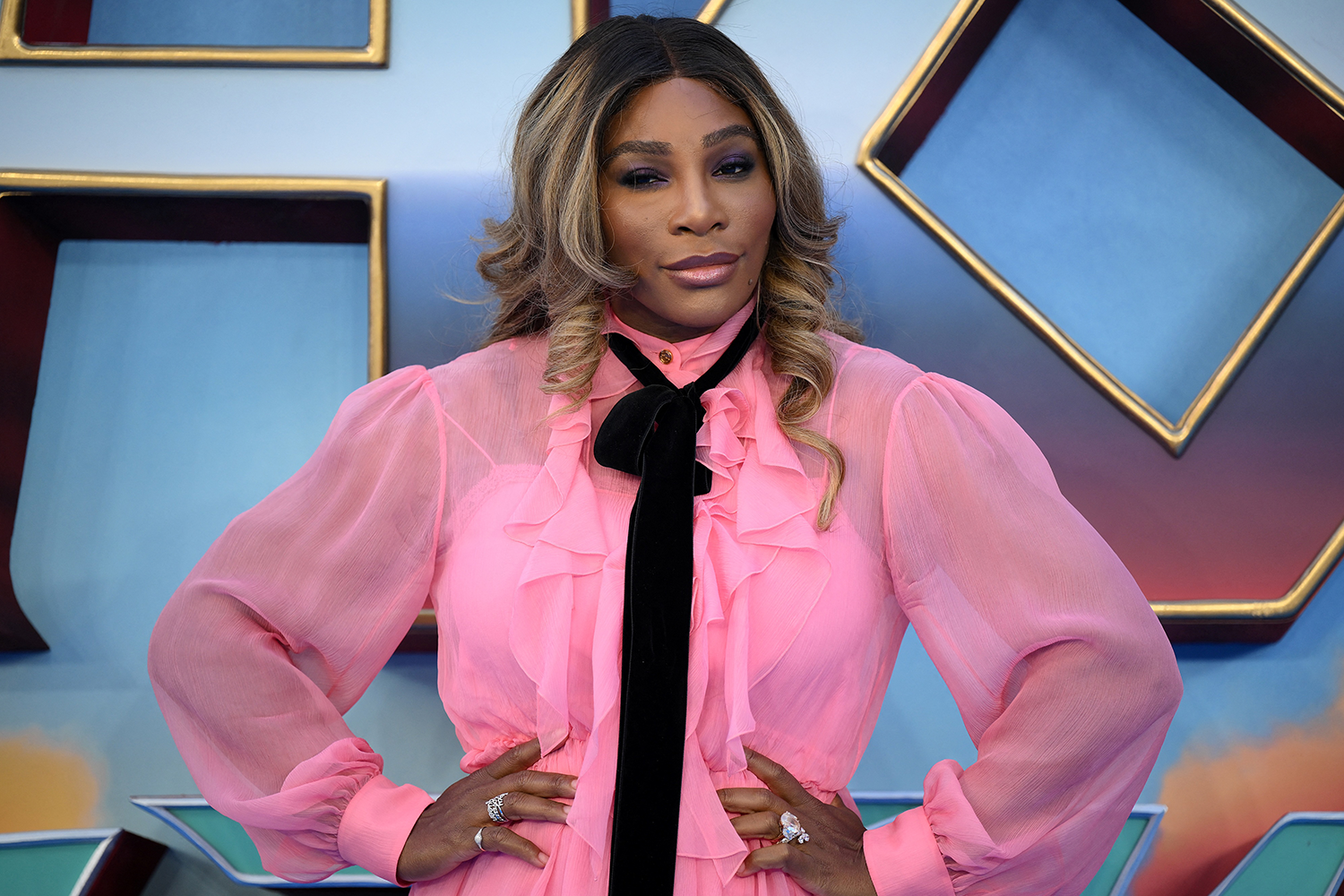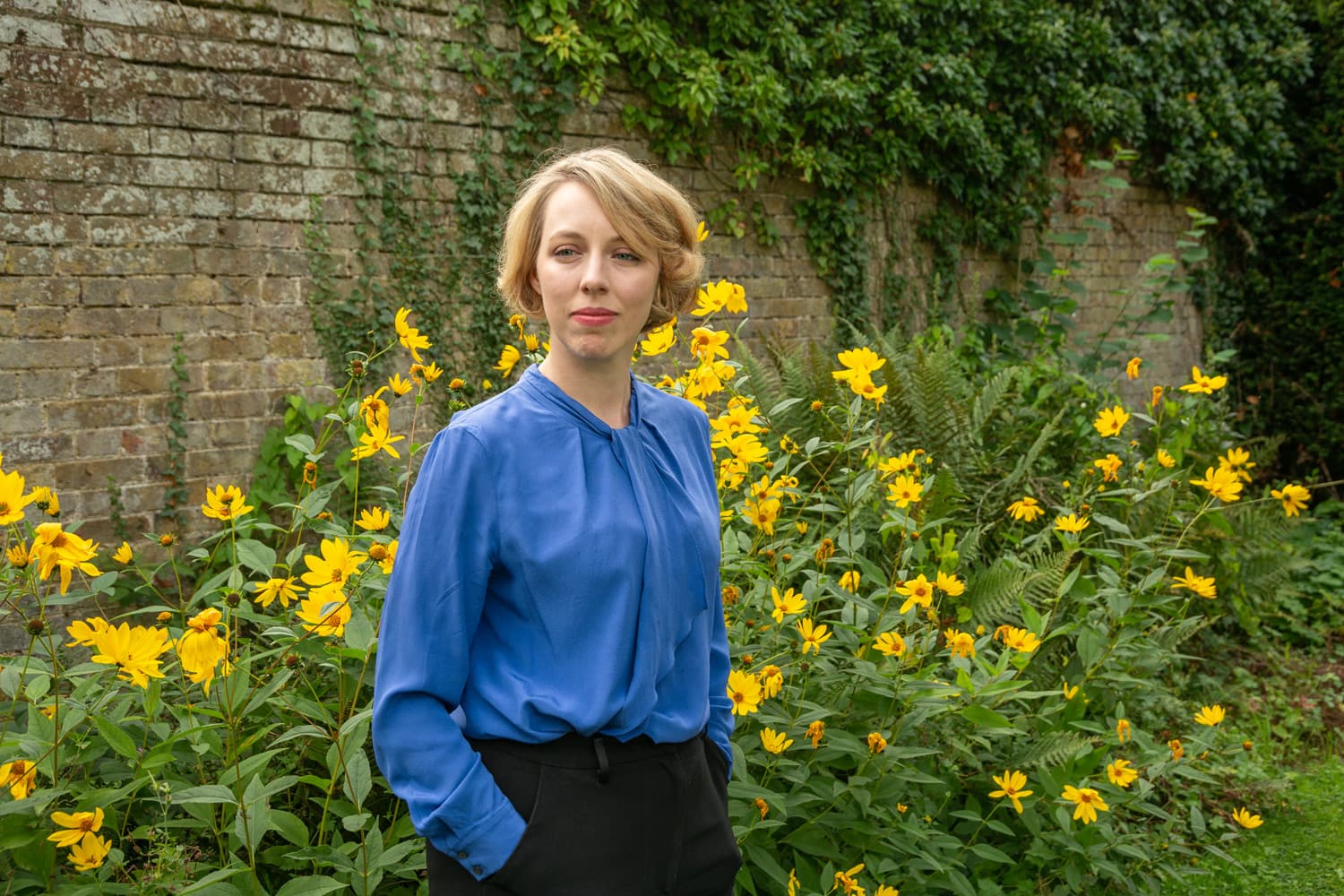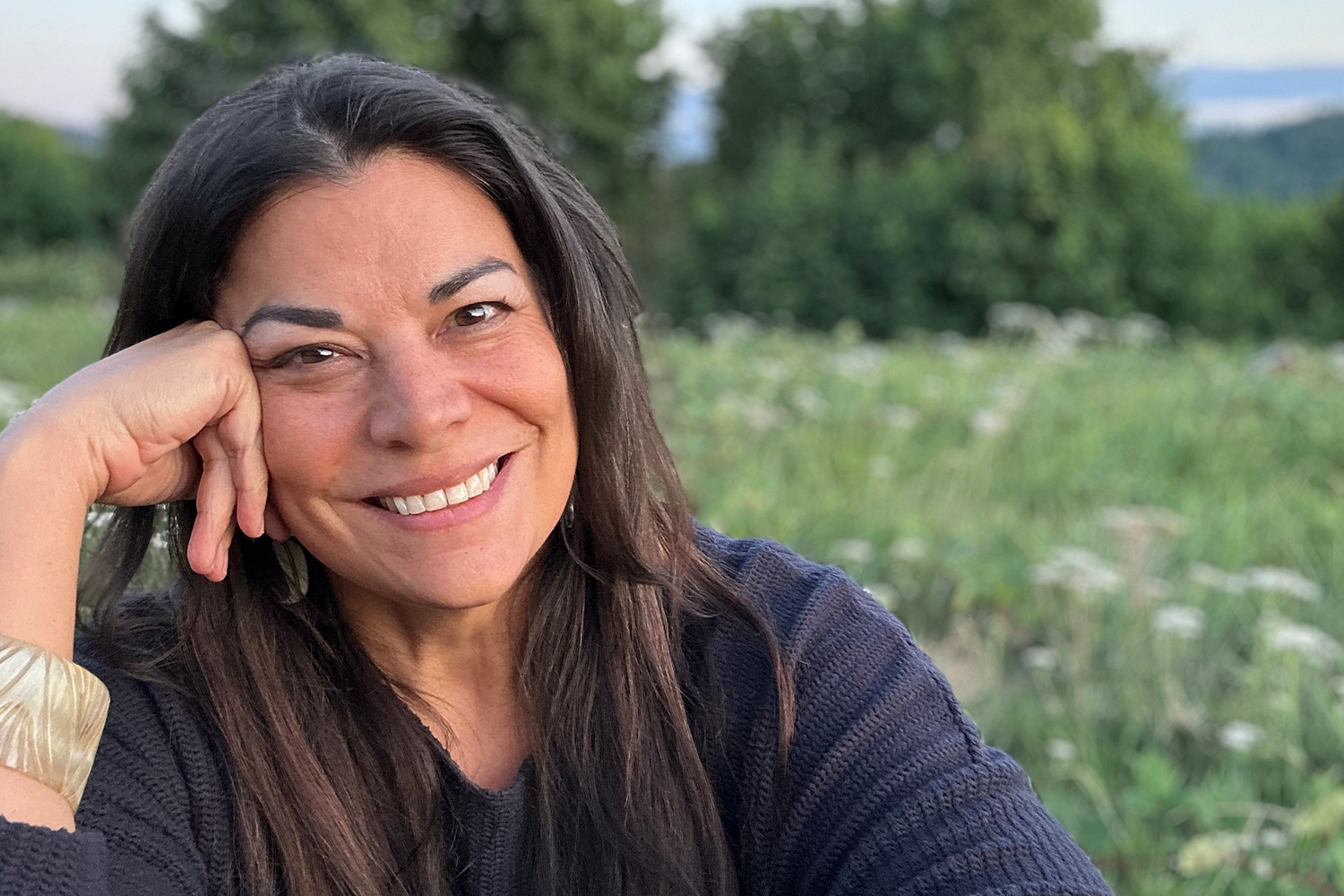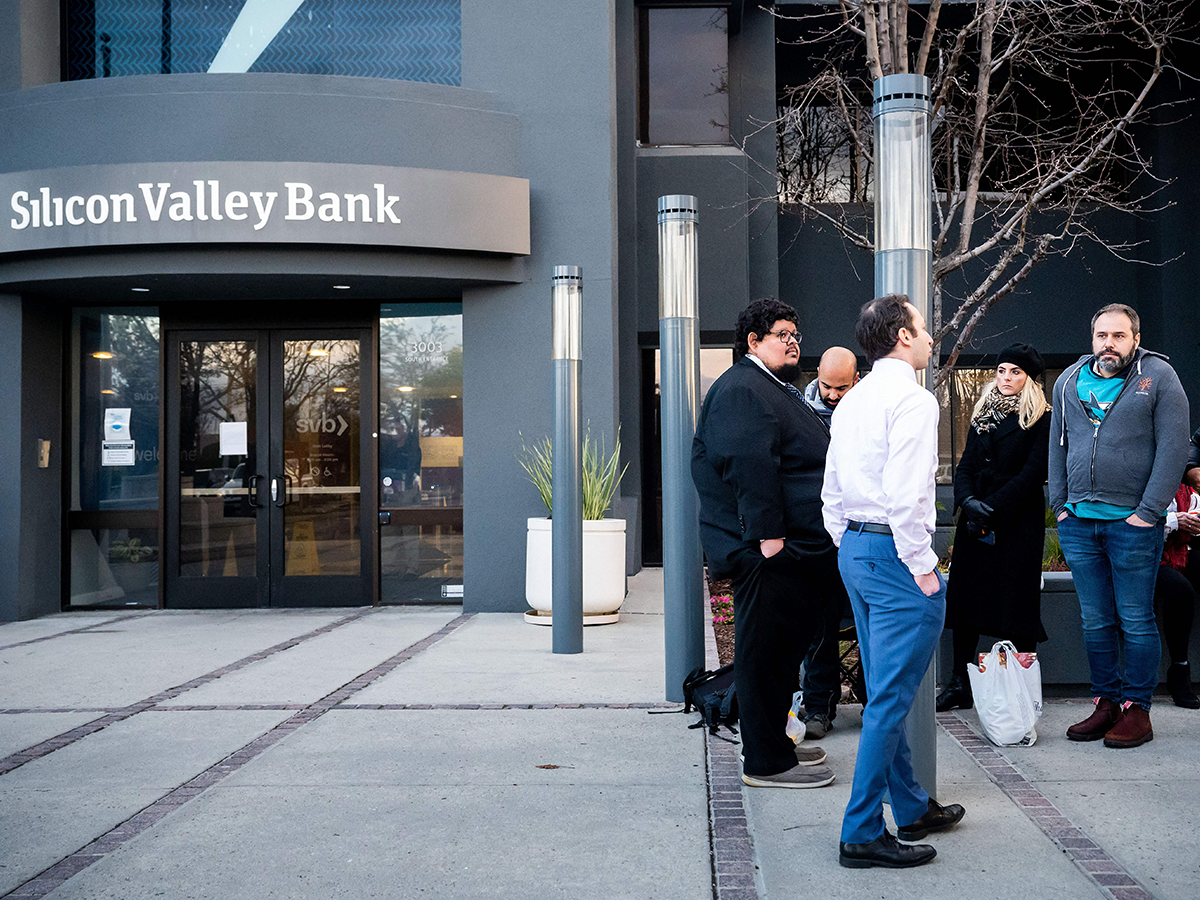When Bobbie Racette was raising her first round of funding for her virtual assistant start-up, she got shot down approximately 170 times. Racette started as the first assistant in 2016 when she lost her oil and gas job, and grew Virtual Gurus from there. Now, the start-up employs 650 virtual assistants, the majority of which come from underrepresented backgrounds, like those living in remote parts of the country to people part of First Nation, Métis or Inuit communities, in addition to single or stay-at-home parents.
“The worst part [about trying to raise] wasn’t investors saying no because they didn’t believe in the business, it was because they didn’t believe in me,” says Racette. As a queer Indigenous woman who wears her tattoos proudly, she didn’t want to hide who she was, and knew it put some people off. Racette was explicitly told by investors she should cover her tattoos, that hiring people from marginalized groups wasn’t a good selling point, and that she shouldn’t share her own motivation to start the company as someone who has felt the impact of being marginalized herself. “I realized afterwards that they obviously weren’t the best investors for me anyway,” she says.
Racette decided to take a more targeted approach. In December 2019, she worked up the confidence to approach Shelley Kuipers and Judy Fairburn, who started The51, a venture capital, or VC, fund focused on women founders. Racette was working out of the same co-working space as the pair in Calgary, and when Kuipers and Fairburn got up to get coffee, she leapt up to join them.
The tech community in the city was small, and there was a lot of buzz about Virtual Gurus that had reached Kuipers and Fairburn even before Racette’s pitch. “Shelley tells people to this day, ‘We were already sold by the time we got to the coffee machine,’” Racette says.
“She just did such a fantastic job of articulating why her business was important, why she was the person to build it and why we would be the right partner for her,” Kuipers says. Now, Kuipers sits on the Virtual Gurus board and is an active mentor, someone Racette has on speed-dial. And that’s the kind of investor Racette wants; she’s not interested in just someone’s money.
The51 is one of a growing number of women-led VC funds in Canada that are specifically interested in funding women founders—a group grossly underinvested in. According to The51, just 10 per cent of VC deals in Canada have gone to women-led start-ups since 2014. Globally, Pitchbook data shows that women-led start-ups in the U.S. received just 2.3 percent of VC funds in 2021.
Part of the problem is that women aren’t at the table of these funds. A 2019 report looking at 55 funds representing $6.1 billion across Canada found only 15.2 per cent of partners at VC firms were women, while in the U.S., that number has been reported at 13.2 per cent. Research shows that when a woman is at the table, a fund is twice as likely to invest in a women-led start-up.
Michelle McBane noticed the gender discrepancy when she was at Toronto-based MaRS Investment Accelerator Fund, or IAF. Only 12 per cent of the IAF portfolio was invested in women-led ventures in 2016. StandUp Ventures, which McBane spun out of IAF in 2017 to focus on women-led companies, was one of the first concerted efforts to change things. It started off as a $5-million fund, and today, it manages $53 million and has brought on institutional investors like RBC, CIBC, VanCity and BDC. The bets they placed have been wildly successful. “We have a 100 per cent conversion rate on the companies who’ve gone from seed-round funding to Series A, which is unheard of,” says McBane, StandUp’s managing director. “We have 15 companies; we haven’t written one down.”
StandUp Ventures arrived at a time where the gender gap wasn’t front of mind for many. “People would say things to me like, ‘You’re cutting out 50 per cent of the addressable opportunities you can invest in,’” says McBane. “Any VC does that—a life science VC cuts down a percentage of the total addressable market they can invest in simply because of their area of focus.” But McBane has seen a shift since StandUp first started, which she attributes to a few things: the mistreatment of women in the start-up world the #MeToo movement brought to light; the availability of more data showing funding gaps; and the growth of funds in general has meant founders have more choice in investors.
Along with The51, smaller funds like Halifax-based Sandpiper Ventures have cropped up, and bigger firms have dedicated funds to investing in women, like the US$30-million Women and Children’s Health Technology Fund at Cross-Border Impact Ventures based out of Toronto. Likewise, BDC Capital targets women founders through the Women in Technology Venture Fund.
Kuipers at The51, who is a serial entrepreneur herself, says women founders face two main challenges when going out to seek investment. The first is being ready to pitch themselves and their team—so much of what VCs fund at the seed stage is based on potential and belief in a founder to execute their vision. The second challenge, one that’s harder to prepare for, “is a collision with a system that’s not ready for your participation.”
Despite evidence that diverse and women-led teams outperform men-led ones, the massive VC funding gap between start-ups founded by men and women has hardly closed in the last few years. “The reason why there is so much bias is because there’s inherent bias in the capital,” says Kuipers. By that, Kuipers means who is behind the capital—men—which is why The51 has focused on raising funds from women.
This bias can play out in many different stages of trying to secure VC investment. The first stage is being introduced to a VC firm, which is highly reliant on existing networks. It’s an investment class that is inherently risky, so people are trying to find certainty within that, says Rhiannon Davies, the founding and managing partner of Sandpiper Ventures, a $10-million fund launched in 2020. Research shows that people tend to trust others who are most like themselves, which means if men are calling the shots, they will more likely turn to ventures led by men. “If white male investors are looking for certainty, they’re going to look for people in their network and people that reflect who they are,” Davies says.
When a woman founder manages to find an audience for her pitch, moving to the next stage can be incredibly challenging. In a typical presentation, a founder comes in with the hope of selling investors on their growth potential and prepares to be grilled afterwards. Part of the problem is baked into what a VC firm is looking for—VC funds invest in early-stage start-ups, relying on a small proportion to perform well to make up for the many that will inevitably fail. Most are invested for at least five years and receive returns when the company either goes public or is acquired. That lays the groundwork for stereotypical tech bros exuding confidence to succeed.
“What I have noticed in my work with entrepreneurs is that [women] tend to underpromise and overdeliver,” says Janet Bannister, managing partner of Montreal-based Real Ventures, a VC fund managing $325 million invested in over 100 companies. “I was talking with a group of 10 women CEOs who are getting ready to pitch their business. Seven of them said, ‘Whenever I do a VC pitch, I always put my lowest base-case scenario in the presentation because I don’t want to promise something that I know I can’t deliver.’”
Ideally, Bannister says, investors need to see a combination of caution and excitement. Founders should portray the “tremendous potential” of their business, and investors should dig into the assumptions founders have made in developing their projections.
But women are also approached differently during the pitch by investors. A 2018 study by Harvard and Columbia researchers looked at transcripts from pitch sessions held from 2010 to 2016 at the annual start-up funding competition, TechCrunch Disrupt in New York. They found women were asked questions related to mitigating risk, while men were asked questions related to growth. In an analysis of Q&As between 140 venture capitalists and 189 entrepreneurs, researchers found women were more likely to be asked questions like, “How long until you break even?” while men were asked questions like, “How will you monetize this?” Men and women investors both fell into this pattern. And the result? Men raised five times as much money as women.
“When women do the kinds of things that men do, they’re systematically rejected”
The authors found the “cycle of bias” continued as the overwhelming majority of participants answered the question in the same way it was asked—i.e. if a woman was asked about potential losses, she talked about losses. “By responding in kind to promotion questions, male entrepreneurs reinforce their association with the favourable domain of gains; female entrepreneurs who respond in kind to prevention questions unwittingly penalize their start-ups by remaining in the realm of losses,” the authors wrote. They also found that turning a loss question on its head and talking about gains instead translated into raising more money—an average of US$7.9 million versus an average of US$563,000.
The solution isn’t simply coaching women founders to pitch more like men, says Sarah Kaplan, director of Institute for Gender and the Economy at the University of Toronto. “When women do the kinds of things that men do, they’re systematically rejected,” says Kaplan. “They’re then seen as not adhering to feminine stereotypes; [investors will] say they’re too aggressive, unpleasant or unlikable.”
She points to a 2014 study where researchers from Harvard, the Wharton School and MIT asked investors to choose projects based on a pitch presentation where they only heard the voice of the entrepreneur. That allowed researchers to test the reactions to men and women voices doing the exact same presentation. Men founders were chosen at more than twice the rate as women: 68 per cent of participants chose the pitch presented by men while 31 per cent of participants chose the women-led pitch. Further, the authors found that “male-narrated pitches were rated as more persuasive, logical and fact-based than [the] same pitches narrated by a female voice.”
This points to the problem when decisions are made by “intuition.” It goes back to how unconscious bias makes sense of what feels certain and safe. “What we know from research is that when uncertainty is high, and when you’re going on intuition, you are much more likely to rely on stereotypes—automatic assumptions that are in your brain,” says Kaplan. People don’t see women as leaders, so they don’t see their start-ups as fundable—which can have little to do with whether or not the project is promising, she adds.
Ironically, characteristics that make women great leaders can get in the way of them raising capital, says Bannister. Women tend to be more team-focused and will credit others rather than crediting themselves. But for early-stage start-ups where there is little information to go on other than the idea itself and the founder, a traditional VC fund wants to see if the leader has “got it.” A woman at the table can change that perception. “A lot of the traits that are seen as negative for a woman founder—being more cautious, taking longer to explain their idea, having a really in-depth deck—make me trust a founder more,” says Arati Sharma, co-founder of Toronto-based Backbone Angels. “I’m like, okay, they’re not being super showy and pretending they’re on Dragons’ Den.”
But efforts to combat bias alone won’t fix a system built without women in mind, says Kaplan. She advocates for redesigning it—which is exactly what some new funds are doing.
While Bannister supports new funds dedicated to women, she knows big funds like hers need to be part of the solution. “We need to have women who are at the helm of larger, more established funds, because those are the firms that are making more investments and writing larger cheques,” she says.
As a large, mainstream fund, Real Ventures changed their pitch process in a few different ways. Founders are told what to expect in advance, they are asked similar questions, and most importantly, are evaluated on a scorecard. The partners went from discussing a start-up as soon as a founder left the room—a process where, like in many spaces, men’s voices were loudest and carried more weight—to one where every partner fills out a survey and discusses their results. Questions include: “To what degree does the company have product/market fit and what evidence supports this?”; “What are the biggest risks to the business?”; “What skills and experience does the team have that make you confident they can achieve their 12-month milestones?” Since changing the process, half of Real Venture’s largest 20 investments have a woman founder or co-founder.
Newer firms are taking an entirely different approach. At Sandpiper Ventures, Davies says they avoid using the word “pitch.” “We are entering into a long-term partnership—it’s not about a founder coming to us hat in hand asking for money,” she says. “It’s about engaging—getting to know one another and determining where there may be mutually beneficial ways we can support each other.” Instead of a 15-minute speed-grilling session, they take more time with founders and allocate half the time for founders to ask them questions. They focus on start-ups where partners have expertise and can offer mentorship. And pre-existing mentorship relationships have proven to be fertile ground for investment.
“A lot of us have young children in my management team—we’re not going and having four o’clock beers and playing ping pong”
Davies started mentoring Brianna Stratton, founder of Halifax-based deep technology company DeNova when Stratton was pregnant with her second son in 2019. Stratton had many mentors who were men, but none could provide her with concrete advice about how to be a mother and a founder at the same time. She wanted to know how other women did it: How much time did they take off? Did they keep in touch with work during their mat leave? Stratton had coffee with Davies and they hit it off.
Eventually conversations about motherhood became conversations about pitch decks. “[Davies had] this ability to have empathy and see me as a whole person in addition to my role as a founder,” says Stratton. Once Sandpiper was up and running, Stratton was just opening her Series A round of funding and became the fund’s first investment.
Working with women investors has opened up Stratton’s ideas about bringing her whole self to work—just like she could talk about her personal life and start-up with Davies. She now tells new employees that DeNova is a family-oriented company where they’ll be seen as a person, not just filling a role. When looking around at her peers, which include a lot of young men, she noticed how much time they had to go to networking events, and didn’t want her team to feel the same pressure. “A lot of us have young children in my management team—we’re not going and having four o’clock beers and playing ping pong. We’re rushing to pick our kids up from preschool,” Stratton says. “We look like a different start-up.”
Stratton has also noticed that women investors have built both massive and deep networks, and conversations that didn’t lead to investments were still a “gift.” “These powerhouse women that have had to do way more to get to where they are than their male counterparts—they’re just incredible to even have brief conversations [with].” She singles out The51 in particular for their unique approach to investment.
The51 is not only funding women-led ventures, but supporting more women to become investors as part of their process. “Investing in a venture fund is largely exclusive—you typically have to be invited and you need to be an accredited investor,” says Kuipers. So The51 has worked at making sure women know they are invited, from small things like developing a financial feminist dictionary demystifying the investment process, to creating an accessible level to start at just $5,100 a year for three years. It’s part of their larger goal to democratize investing and change where capital comes from.
Since founding the platform, The51 has attracted over 100 investors, putting $18 million into 40 ventures. The51 has raised a sector-agnostic fund, and is raising a second sector-agnostic fund and a food and agtech fund. Its Fund 1 portfolio includes direct-to-consumer brands like skincare line Blume, fintech start-ups MyFO and ReUpp, and agritech precision-dairy start-up SomaDetect. These investments reflect the products The51 want to see in the world because investors are also consumers, says Kuipers, and women often see the opportunities traditional firms have missed.
“They believe in women founders who are doing something different”
As a first-time founder, Swati Matta has often been told by investors that women’s health is a “niche market.” A pitch with that sort of audience means Matta ends up spending time educating the investor on why the market matters rather than digging into how her company is filling a gap. She pitched Koble, a digital health platform providing access to a range of experts like lactation consultations on a subscription model, to 50 investors last summer as part of her first raise.
Women tend to think about fit with investors. In Matta’s case, that meant taking a pause part way through her first round because she realized most of her investors were white men. While having some big names backing her helped bring others in—the CEO of Cleveland Clinic Canada, for instance—she wanted the foundation of her company to be as diverse as her team. “I wanted more representation on my cap table because I want to build a company that will be reflective of the target segment of parents, especially the makeup of parents in Canada, which is very diverse and multicultural,” says Matta. Ultimately, those perspectives inform the product, and Matta didn’t want to miss out on that. She ended up achieving more than half underrepresented investors on her cap table after being more strategic about who to ask for money—unsurprisingly, many were not VC investors.
One of those investors is Sharma, of Backbone Angels, an angel fund made up of former Shopify employees focusing on investing in BIPOC women. The conversations with women about her product were much more straightforward. “It wasn’t hard for Arati and the team to understand the purpose and mission of Koble because most of them are mothers,” says Matta. “They were immediately supportive and wrote the damn cheque.”
Sharma started investing in women, and prioritizing BIPOC women, after realizing most of her investments were in men and white women. She set a strategy when she realized “you can’t change what you don’t measure.” While across the country, the availability of stats on investments in BIPOC and women founders is dismal, she could at least track her own progress. For Sharma, it’s exciting to be able to see a market immediately that others don’t, or to not have to code switch during a pitch. Part of her strategy is to be as open as possible as an investor, and she hopes BIPOC women feel comfortable approaching her. “I know what it means to be underestimated, but I also know what it means when someone takes a chance on me,” says Sharma. “I want to be a cheerleader for other people because I’ve experienced that privilege myself.”
Feeling comfortable enough to pitch was key for Racette when she approached Kuipers and Fairburn from The51 two years ago. And she recognizes they waited for her to come to them. After so many rejections during that raise, Racette was very aware of how some investors made her feel—on edge and a bit unsafe in the way they shut her down. Her experience with The51 was the opposite. “They believe in women founders who are doing something different,” says Racette. “We need more of that.”










